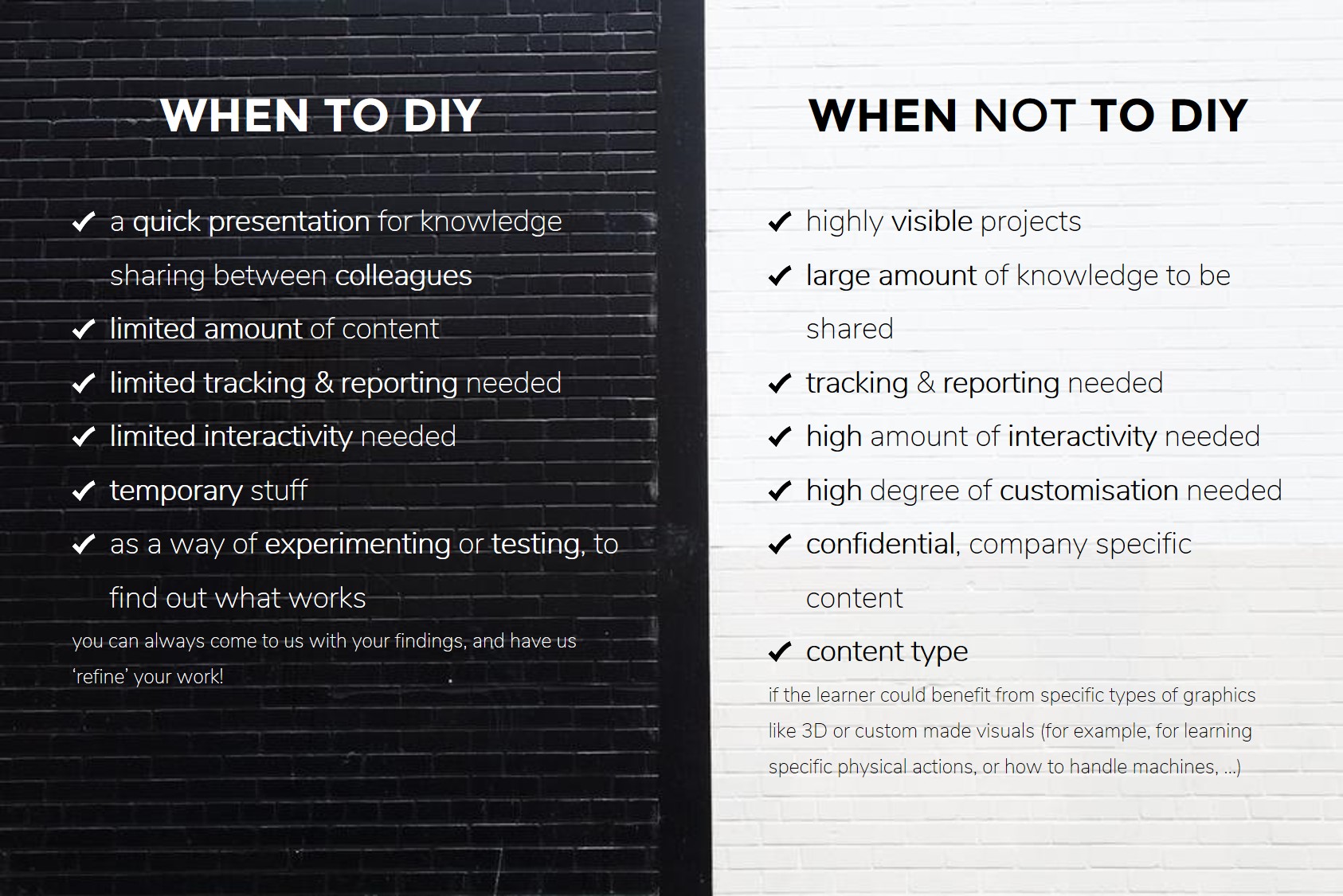Wanna know a secret? Creating digital learning content is not hard. You don’t expect to hear this from a company that develops e-learning, but it’s the truth. There are some great tools out there which can help you create “quick & easy” content you can use for knowledge sharing.
These tools usually require little technical knowledge, are completely free or low-budget, and you can get things done fast. DIY-ing means there are no other parties involved, so you don’t need to wait for anyone, or pay anyone …
Some examples
- To make video recordings of your screen (ideal for software simulations): Screencast-o-matic, Camtasia (it’s not free, but it offers some interesting editing options), …
- To create short animated videos: Vyond, PowToon, Moovly, Wideo …
- To create beautiful visuals like infographics: Canva, DesignBold, Piktochart, …
- Did you know that there are add-ins for tools that you’re probably already familiar with? Like iSpring to convert your Microsoft PowerPoint presentations to HTML or SCORM.
Interactivity
Which level of interactivity do you want? Most free ‘DIY’ tools offer little to no options to establish interaction with the learner. Publishing your files will often result in extensions like .mp4, .pdf, … which don’t allow user interaction, like personalised feedback, exercises, tracking of your users’ activity, …
Quality
Does the content meet your company’s quality standards? For example, will you be able to follow the company style guide (fonts, colours, use of the logo, …)? Not all tools allow the required level of customisation you may need.
Customisation
Mind that tools like Vyond and Moovly come with a limited set of characters, decors,… and people will probably have seen some of them before. That may not be what you want in some cases.
Didactics
What about the didactical aspect? Do you have enough pedagogical baggage to determine the best way to get your learners to learn (and remember)? Does this type of content serve the goal you want to reach? Never start your development process by thinking of the tool first. First think about what you want your learners to be able to do, and then select the tools you need to achieve that.
Implementation
How are you going to bring the content to your learners, in an efficient way? What about reporting, analytics, data security?
Legal aspects
From a legal point of view: is the content you use (sources, images, audio, …) free to use? You probably already know that plucking pictures off the internet is not always okay, but did you know that you also have to be careful when incorporating (YouTube) videos you didn’t make yourself? Make sure you’re using your own photos and videos, or use royalty free ones! Free stock photos can be found quite easily. Finding good quality stock videos is a little harder; a nice resource for free videos is PikWizard for example.
Time
Last but not least: doing it yourself can be very time consuming …
Conclusion
So, when is it a good idea to go for DIY content creation for learning, and when isn’t it? Our answer are two words you probably don’t like to hear: it depends. It depends on what you, your company and your learners want and need. Creating digital learning content is not hard, creating really good content is. That’s also the truth :).
<< Check out our quick guideline!



